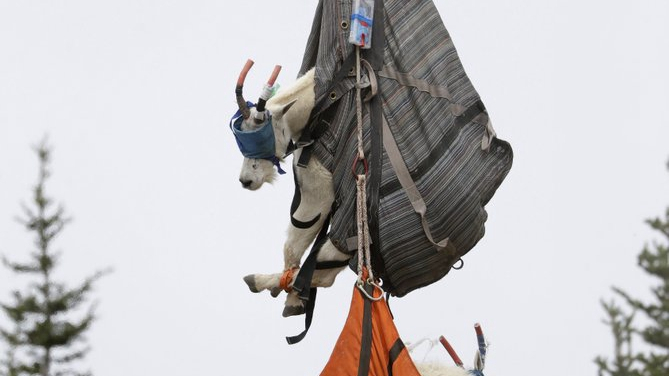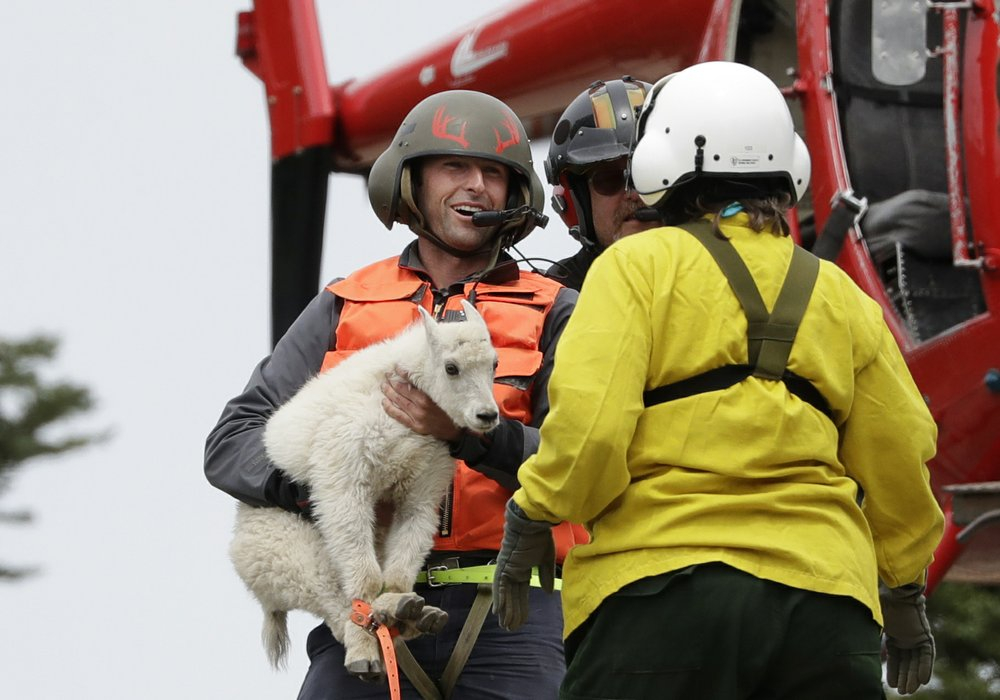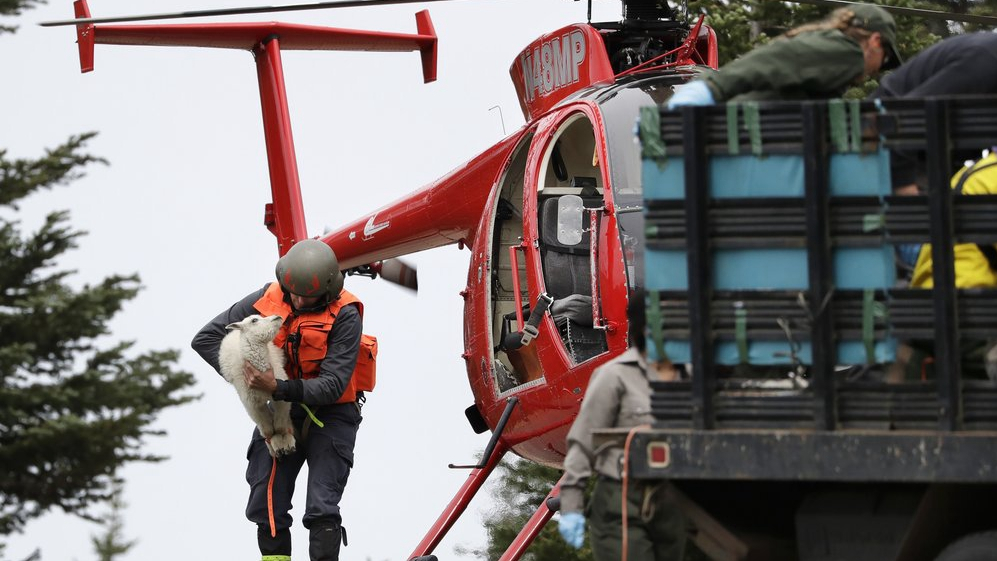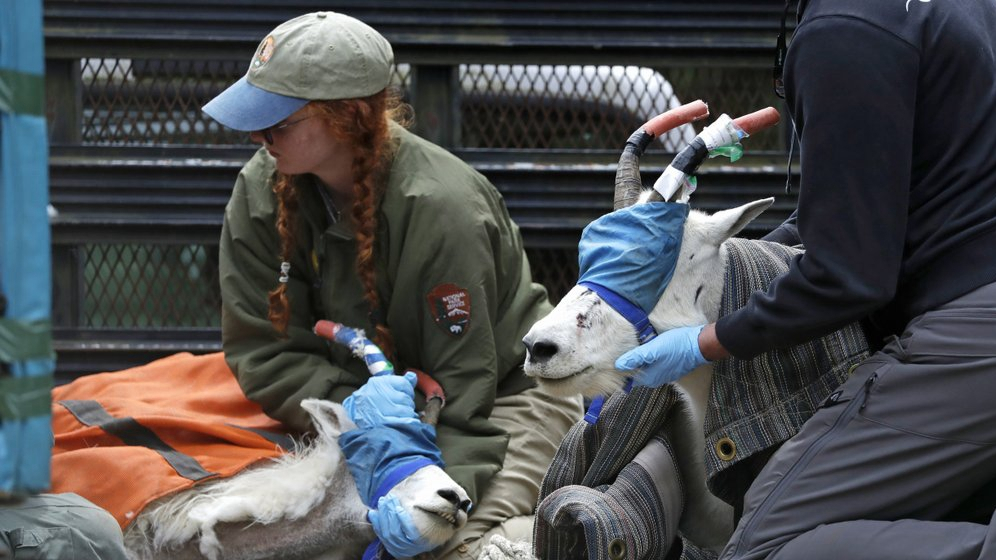

Mountain goats are flown in to Olympic National Park for the second straight summer.
Officials this week began rounding up the sure-footed, but non-native, mammals from remote parts of the park, where humans introduced them in the 1920s to relocate them to the Cascade Mountains where they belong.
Animal capture specialists known as "gunners" and "muggers" sedate the animals with darts or capture them in nets, blindfold them, pad their horns and fly them — on slings dangling from a helicopter — to a staging area.
There, they're looked over by veterinarians and outfitted with tracking collars before being trucked to the Cascades and once again flown by helicopter to their new alpine habitats.

"Mugger" Derrick Halsey hands off a kid mountain goat to Olympic National Park Wildlife Branch Chief Patti Happe Tuesday, July 9, 2019. after airlifting the goat and two others to Hurricane Ridge near Port Angeles, Wash. /AP Photo
The relocations began last year following a years-long stretch of planning and public comment with 115 of the roughly 725 mountain goats in the Olympics being moved to the Cascades.
Officials captured 17 Monday and Tuesday at the start of a two-week goat relocation period, including a kid about six-weeks-old, which got a ride on a mugger's lap inside the helicopter instead of hanging beneath it.
The Olympics have few natural salt licks, making it more likely goats will be attracted to the sweat, urine and food of hikers, potentially endangering them. One goat fatally gored a hiker in 2010.

As others tend to two adult mountain goats on a flatbed truck in front of him, Derrick Halsey, a wildlife capture specialist known as a "mugger," carries a kid mountain goat from a helicopter Tuesday, July 9, 2019, on Hurricane Ridge in the Olympic National Park near Port Angeles, Wash. /AP Photo
A coalition of state and federal agencies and American Indian tribes are behind the effort, which involves closing parts of the park, including the Seven Lakes Basin and Klahhane Ridge. A second two-week closure period is planned for August.
"Mountain goat relocation will allow these animals to reoccupy historical range areas in the Cascades," said U.S. Forest Service Wildlife Biologist Jesse Plumage, in a news release.
The capture of the goats was contracted out to Leading Edge Aviation, a company that specializes in animal capture and relocation.

A billy mountain goat, blindfolded, hobbled and sedated, has a tracking collar put on him while also being examined by a team of veterinarians and assistants. /AP Photo
The Washington Department of Fish and Wildlife plans to release the goats at six sites in the Cascades. They include the Chikamin area in the Okanogan-Wenatchee National Forest, Preacher Mountain in the Mount Baker-Snoqualmie National Forest, Hardscrabble Ridge and mountain peaks south of Darrington.
Rich Harris, the Washington Department of Fish and Wildlife biologist leading the agency's work to move the goats, told The Seattle Times this month that of those relocated last year, about 65 to 70 survived the winter. Half of the 10 relocated kids survived, he said.
(Cover image via AP)
(If you want to contribute and have specific expertise, please contact us at nature@cgtn.com.)

Copyright © 2018 CGTN. Beijing ICP prepared NO.16065310-3
Copyright © 2018 CGTN. Beijing ICP prepared NO.16065310-3